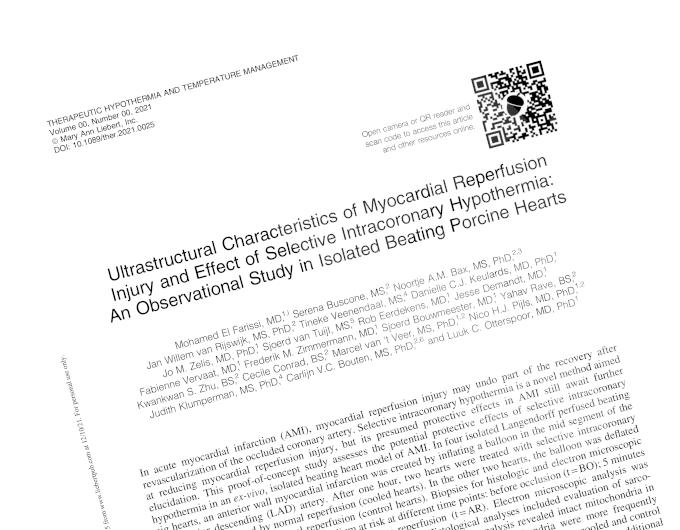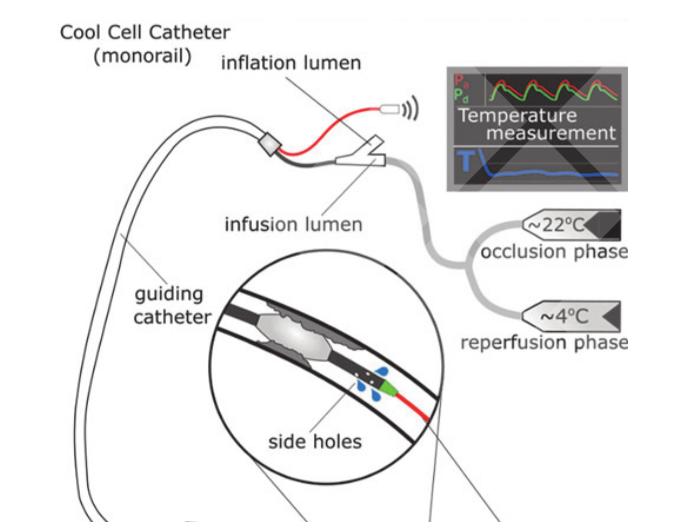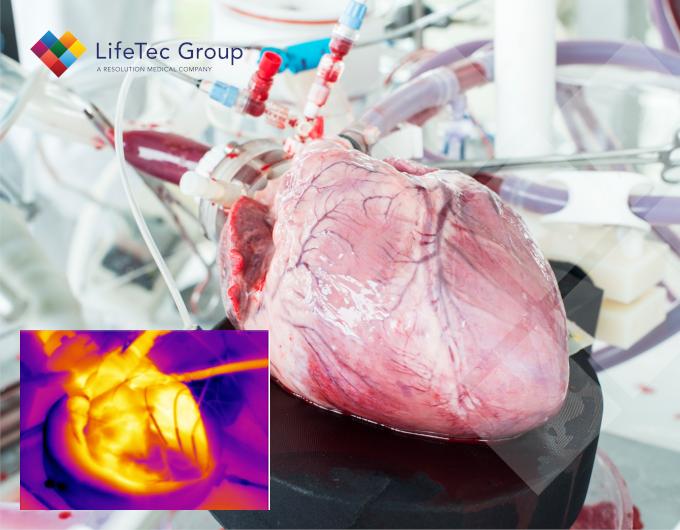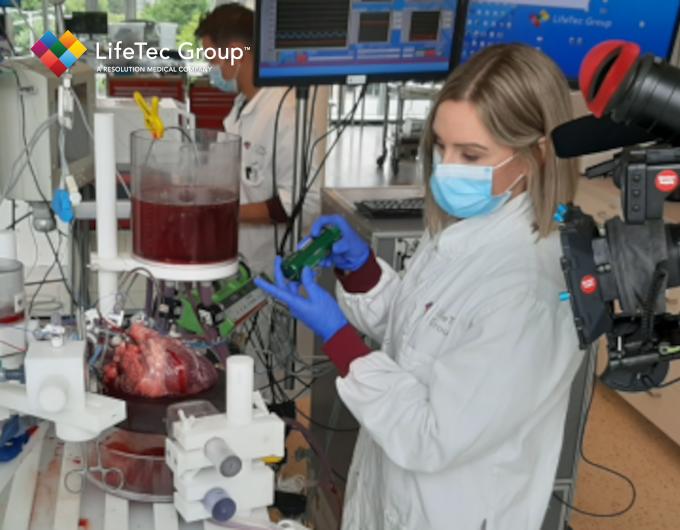New paper on intracoronary cooling
We are happy to share that our PhysioHeart™ platform has once again contributed to a scientific publication! A team of researchers from the Catharina Hospital in Eindhoven, the Eindhoven University of Technology, the University Medical Center in Utrechtand LifeTec Group™ have been investigating the effect of intracoronary cooling on reperfusion injury following acute myocardial infarction in the PhysioHeart.

The Clinical Case
In patients with an acute stenosis in the coronary system, the cardiac tissue downstream the stenosis is at risk of dying due to lack of blood supply. For decades, these patients have been treated clinically by re-opening the artery which can be achieved in different ways. For example, balloon dilation, stenting, or removing a blood clot are methods to reopen the blocked coronary artery to prevent further tissue damage.
When such a blocked artery has been reopened, the reperfusion of the artery once again provides blood to the tissue. However, it has been observed that there is also a type of tissue damage that is caused by this reperfusion: this is called reperfusion injury. The research team in this study are investigating if local cooling of the tissue will lower the reperfusion injury damage in the infarcted tissue area. The concept is like in sports: the bruize of a sports player is cooled to limit the consequences of contact with an object or another player.
In this acute proof of concept study, a myocardial infarction was simulated by inflating a balloon catheter halfway down the LAD coronary artery for 1 hour as a model for a coronary blockage in an acute patient.

PhysioHeart™ experiments
As shown in the picture, the PhysioHeart platform was used as the isolated beating heart model is easily accessible for both the interventional instruments as well as the verification of tissue cooling. In the insert in the picture, the area that was cooled by the intracoronary injection of room-temperature saline was recorded using a thermal camera. In the thermal image, the warm tissue is yellow and the cooled area turns a purple shade. Also thermocouples were used to measure tissue temperature deeper in the cardiac muscle, which can be seen as purple needles just above the cooled tissue area. The theory that was tested is whether or not intracoronary cooling would result in less tissue damage before reopening of the coronary artery.

The study
As this was a relatively short timeframe study, e.g. 1 hour of warm ischemia followed by 10 minutes of reperfusion, it was not certain if in that timeframe early signs of reperfusion injury could be observed that would be predictive for longer term tissue damage. Tissue biopsies were taken from the affected area of the heart, which were later used for histology and scanning electron microcopy analyses.
In the analyses, an increase of myocardial damage was observed on histological evaluation immediately after reperfusion, confirming existence of myocardial reperfusion injury. The selective intracoronary hypothermia seemed to preserve mitochondrial integrity. From this, a better insight of the immediate tissue responses has been gained. With this knowledge, hypotheses for the resulting longer-term effects can be formulated which are to be confirmed in prolonged in-vivo application.

Ultrastructural Characteristics of Myocardial Reperfusion Injury and Effect of Selective Intracoronary Hypothermia: An Observational Study in Isolated Beating Porcine Hearts.
Mohamed El Farissi, et al.
THERAPEUTIC HYPOTHERMIA AND TEMPERATURE MANAGEMENT, Volume 00, Number 00, 2021
DOI: 10.1089/ther.2021.0025
What is in it for you?
The PhysioHeart™ platform is a very accessible and versatile ex-vivo beating heart platform developed at LifeTec Group that we use to support research and feasibility studies. It has many advantages, allowing protocols and measurements that are hard to conduct in-vivo, and because of this you can learn more. Moreover, as there's no dependence on living subjects it can be rapidly used which means you obtain results on very short notice, speeding up your project. Our team has abundant experience in many interventional studies, and our strength is in re-creating the experimental setting that you need with the PhysioHeart as a basis.
If you are working on a cardiac intervention and are ready for acute animal studies, or don't get the results from in-vivo studies that you were hoping for, our team is here to help you to gain valuable insights! Feel free to reach out for more information.
Interested in more about what we do at LifeTec Group? Contact us!
Call at +31 40 2989393 Or e-mail us
